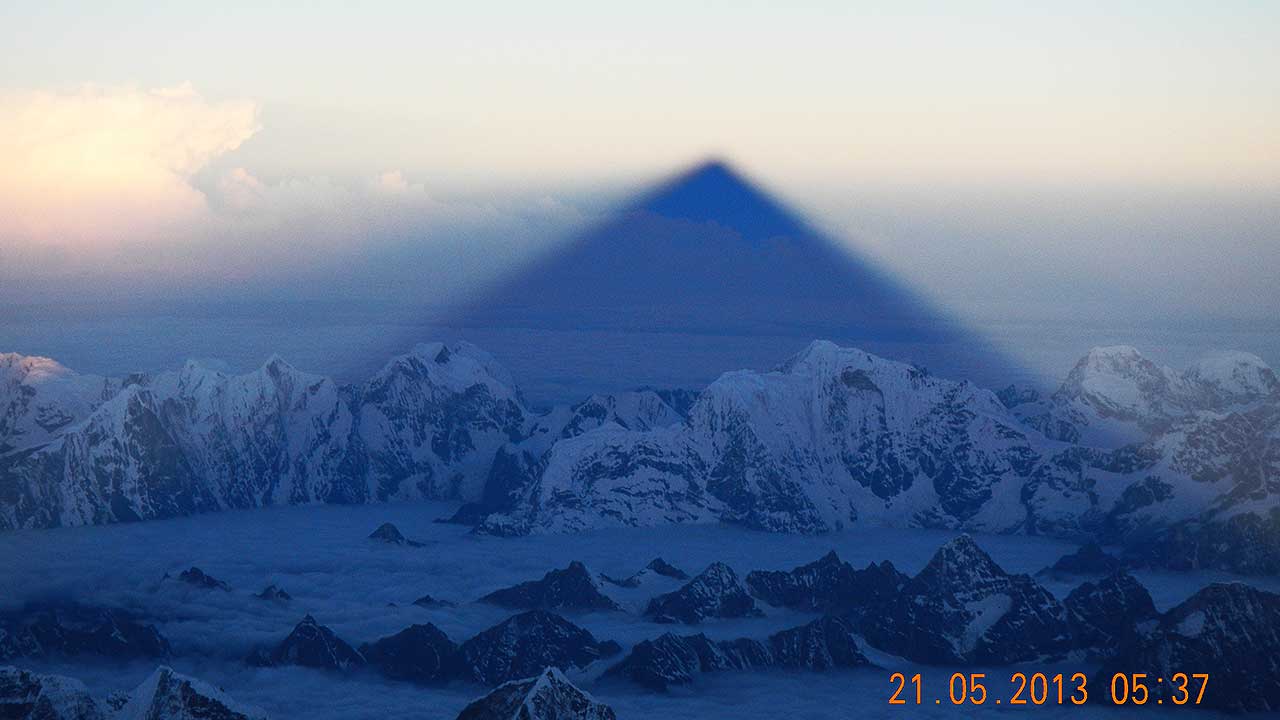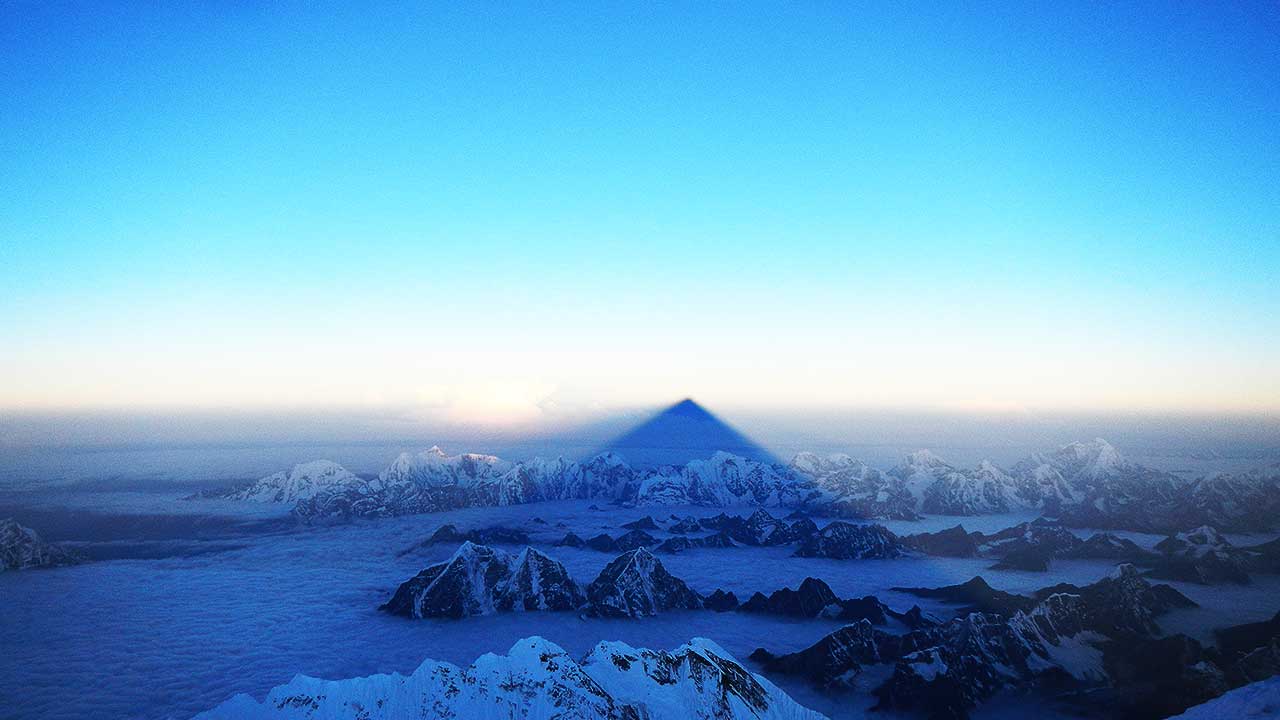Exploring the Enigmatic Triangular Shadows of Peaks
Blogs
The triangular shadow of peaks, often observed during sunrise or sunset, is a fascinating optical phenomenon rooted in the geometry and optics of light. This effect is particularly striking in high-altitude mountains. Here are the reasons for the triangle shadow of peaks:
1. Pyramid Shape of Peaks
Mountain peaks are typically conical or pyramidal in shape. When the sun is low on the horizon, its light casts shadows that accentuate this shape. The triangular shadow is a direct projection of the mountain’s three-dimensional form onto the relatively flat terrain or atmosphere below.
2. Low Angle of the Sun
During sunrise and sunset, the sun’s rays hit the earth at a very shallow angle. This long, slanting light casts extended shadows. The low angle emphasizes the mountain’s height and shape, resulting in a distinct, elongated triangular shadow.
3. Atmospheric Conditions
The atmosphere can amplify the effect of the shadow. In clear conditions, the sharpness of the shadow is enhanced, while in hazy or misty conditions, the shadow can appear more diffuse but still retains its triangular shape due to the peak’s geometry.

4. Optical Projection
The triangular shadow is essentially a result of perspective and optical projection. As light travels from the sun, it is blocked by the mountain and projected onto the ground or clouds below. The height of the mountain and the low angle of sunlight create a shadow that tapers to a point, resembling a triangle.
5. Position of the Observer
The observer’s position also plays a crucial role. When viewing from a distance, the triangular shape is more pronounced because the observer can see the full extent of the shadow, from the base to the tip. Closer observations may result in seeing only parts of the shadow.
6. Examples in Nature
This phenomenon is best observed in isolated peaks, such as those found in the Himalayas, Andes, or the Alps, where the surrounding terrain is relatively flat, providing a clear canvas for the shadow.

- Find out when Ajay Sohal captured the Mt. Everest triangular shadow.
Scientific Explanation
The physics behind the triangular shadow of peaks involves understanding the interplay between light and the mountain’s geometry. The sun’s rays, when blocked by the peak, create a shadow that extends in the direction opposite to the light source. The conical shape of the peak means that the shadow will be widest at the base and narrowest at the peak, forming a triangle.
Conclusion
The triangular shadow of peaks is a spectacular natural phenomenon, beautifully illustrating the principles of geometry and optics. It serves as a visual reminder of the intricate interplay between light and landscape, often leaving viewers in awe of nature’s splendor.
References
For a deeper understanding of this phenomenon, you can refer to articles on mountain shadows and light interactions in geographical or optical physics sources.
For further reading, you can check out the detailed explanations provided by:
Read Similar Article
Is Gravity Different at the Top of Everest?
How Hypoxia Could Ruin Your Summit Dreams & How to Stop It!